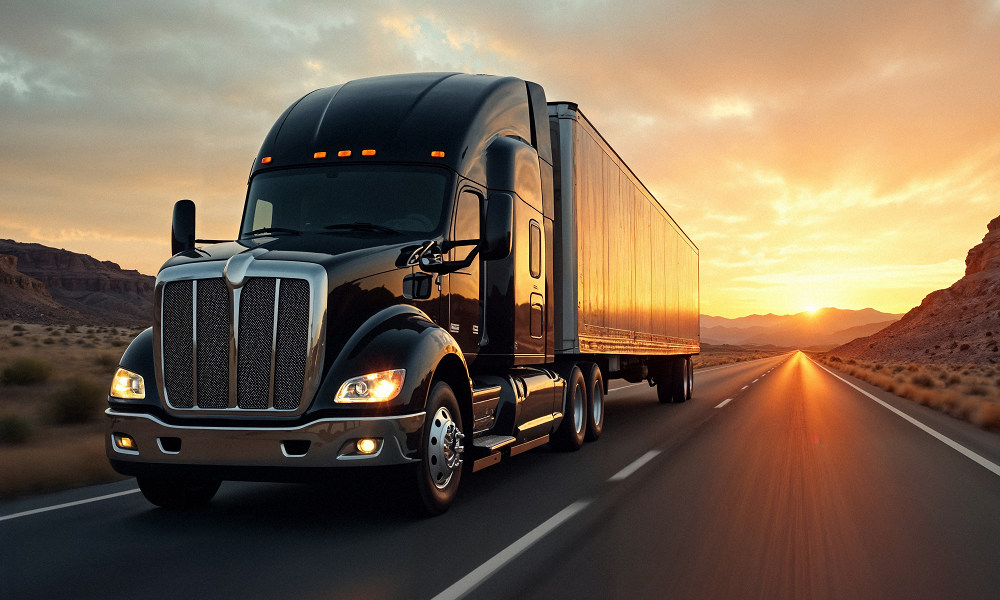Reviews
Lower Premiums and Greater Input: The Mutual RRG Approach to Commercial Auto Insurance

Commercial fleet owners often face unpredictable premiums and limited solutions with standard policies. This drives many to explore risk retention groups (RRGs), where members pool resources for tailored coverage, faster decisions, and potentially lower costs.
In this article, we’ll show how mutual RRGs work, why they attract transport businesses, and how they offer more control than traditional insurance.
Defining a Mutual RRG
A risk retention group is a collective of businesses. They band together to insure liability exposures common to their industries. “Mutual” means policyholders collectively own the entity. Rather than directing profits to outside shareholders, an RRG reinvests or shares them among members.
For transportation companies, this structure can offer a stable alternative to traditional carriers that juggle many types of insurance lines and must satisfy investor demands.
Why Transportation Fleets Consider RRGs
Insurance is a major budget line for any commercial fleet, and traditional policies don’t always address the industry’s unique challenges. By joining an RRG, members aim to:
- Reduce Costs
Since profits remain within the group, it can translate into more competitive premiums over time.
- Customize Coverage
Policies can be shaped around your actual risks, be it long-haul freight or local delivery routes.
- Exercise Greater Influence
Members have a say in the group’s decisions, fostering transparency in premium-setting and coverage inclusions.
Risk retention groups like STAR Mutual RRG deliver tailored solutions, ensuring compliance across multiple states while offering coverage options for various vehicle classes such as box trucks, cargo vans, or specialized rigs. This model aligns best with businesses that want more involvement in their insurance arrangements.
Unique Features That Set Mutual RRGs Apart
No Outside Shareholders
Traditional insurers often focus on profitability for external investors, but an RRG’s income supports its member-owners. This often leads to:
- Competitive Pricing: Surplus funds may reduce premiums, rather than boost corporate profits.
- Investment in Loss Prevention: The group can fund driver training or safety tech to cut claims across the board.
Focus on Specific Risks
Because RRGs revolve around a particular industry, their coverage terms and underwriting decisions reflect your exact liabilities, not a generic business profile.
Transparent Governance
RRGs typically hold periodic meetings or voting sessions to discuss significant changes. Your voice can directly influence policy updates, coverage expansions, or premium adjustments.
Balancing Collective Risk
Membership in an RRG means you share risks with other companies, which can be both beneficial and challenging. If everyone invests in better safety protocols, everyone gains. However, if the group experiences a spike in accident claims, premium adjustments could affect all members.
To maintain a positive balance, RRGs encourage each participant to uphold rigorous safety standards. Regular inspections, driver training, and telematics data can bolster the entire group’s profile and moderate rates.
Streamlined Claims and Underwriting
RRGs usually prioritize efficient claims handling, since cumbersome delays hurt all members. You might find:
- Faster Underwriting: Fewer bureaucratic layers let RRGs finalize policies quickly, ideal for adding new trucks or routes on short notice.
- Clearer Claim Processes: Mutual ownership fosters accountability. When everyone shares financial outcomes, there’s an incentive to resolve issues promptly.
If your operation values fast claim approvals and minimal downtime, the RRG model can be appealing.
Suitability for Different Fleet Sizes
Small Fleets: An RRG can offer close-knit support and the chance to learn from similar operators, offsetting the feeling of being a minor account in a large traditional insurer’s portfolio.
Mid-Size Operators: Regional carriers dealing with multi-state regulations may appreciate the RRG’s focus on commercial auto, which often streamlines compliance.
Larger Enterprises: Even bigger fleets stand to benefit from a structure that lowers overall claim frequency through shared best practices, contributing to more predictable costs.
Whether you run five vehicles or fifty, the principle remains: an RRG’s mutual ethos can yield advantages in pricing, coverage options, and prompt service.
Weighing Potential Drawbacks
Before diving into an RRG, consider these factors:
- Group Dynamics
Your rates can be influenced by other members’ safety records. If some participants have frequent accidents, everyone could see higher premiums.
- Regulatory Complexity
Setting up or joining an RRG may involve additional state-level filings. Make sure you understand the requirements in every state where you operate.
- Longer Commitments
Exiting mid-policy might be more complicated than canceling a standard insurance contract. Some RRGs also have membership fees or capital contributions.
Steps to Join and Succeed in an RRG
If you decide a mutual RRG fits your commercial auto insurance goals, follow these guidelines for a smoother transition:
- Review Eligibility
RRGs often seek members with established safety protocols and stable financials.
- Examine Costs and Coverage
Compare RRG quotes with traditional policies for a full financial picture.
- Implement Safety Measures
Show a commitment to reducing accidents by installing telematics systems or organizing driver training sessions.
- Stay Engaged
Attend meetings and vote on policy changes, so you remain informed about coverage, claims trends, and potential premium shifts.
Active participation helps both you and the group. The more each member invests in safety and open communication, the more stable coverage becomes for everyone.
Conclusion
Risk retention groups provide a focused solution for commercial auto insurance, offering tailored coverage, lower premiums, and improved safety.
While not for everyone, they require collaboration and a strong safety focus. For those who value shared solutions, the rewards include faster claims, transparent policies, and greater control.

-

 World1 week ago
World1 week agoEthiopian volcano erupts for first time in thousands of years
-

 Health2 days ago
Health2 days ago8 kittens die of H5N1 bird flu in the Netherlands
-

 Legal7 days ago
Legal7 days agoUtah Amber Alert: Jessika Francisco abducted by sex offender in Ogden
-

 US News6 days ago
US News6 days agoExplosion destroys home in Oakland, Maine; at least 1 injured
-

 Health7 days ago
Health7 days agoMexico’s September human bird flu case confirmed as H5N2
-

 Legal3 days ago
Legal3 days ago15 people shot, 4 killed, at birthday party in Stockton, California
-

 World7 days ago
World7 days agoWoman killed, man seriously injured in shark attack on Australia’s NSW coast
-

 US News2 days ago
US News2 days agoFire breaks out at Raleigh Convention Center in North Carolina




